Morocco
From the lofty snow-capped peaks of the High Atlas mountains to the stark sands and red-granite gorges of the Sahara, Morocco is a land of mystique and mystery. Morocco’s legacy of ancient empires is painted across the country from fortified Kasbahs and medinas to towering mosques and sprawling, ornate palace complexes. Intricate painted wood paneling, stained glass, and elaborate ceramic tiles ornament some of Morocco’s most impressive architecture. Traditional artistry and an incredible food culture blending Mediterranean with Arabic and Berber flavors make this a paradise for art enthusiasts and foodies.
The walled maze-like medinas of Marrakech and Fes are a dazzling feast for the senses; the muezzin’s calls to prayer resonate through the spice-laden atmosphere, where snake charmers and vendors vie for attention. Immerse yourself in the heady rush of Morocco’s cities, and then escape to the serenity of the mountains in Tafraoute or the breezy beaches of Essaouira. Stay in boutique riad hotels, built around interior courtyards often boasting gardens and fountains, or head to the Sahara for a luxe camping adventure under the stars. Whether you are people-watching in the Djemaa el Fna square of Marrakech, or basking in the quiet cool of an oasis, Morocco is an enthralling tapestry of hectic streets, incredible architecture, and awe-inspiring nature.
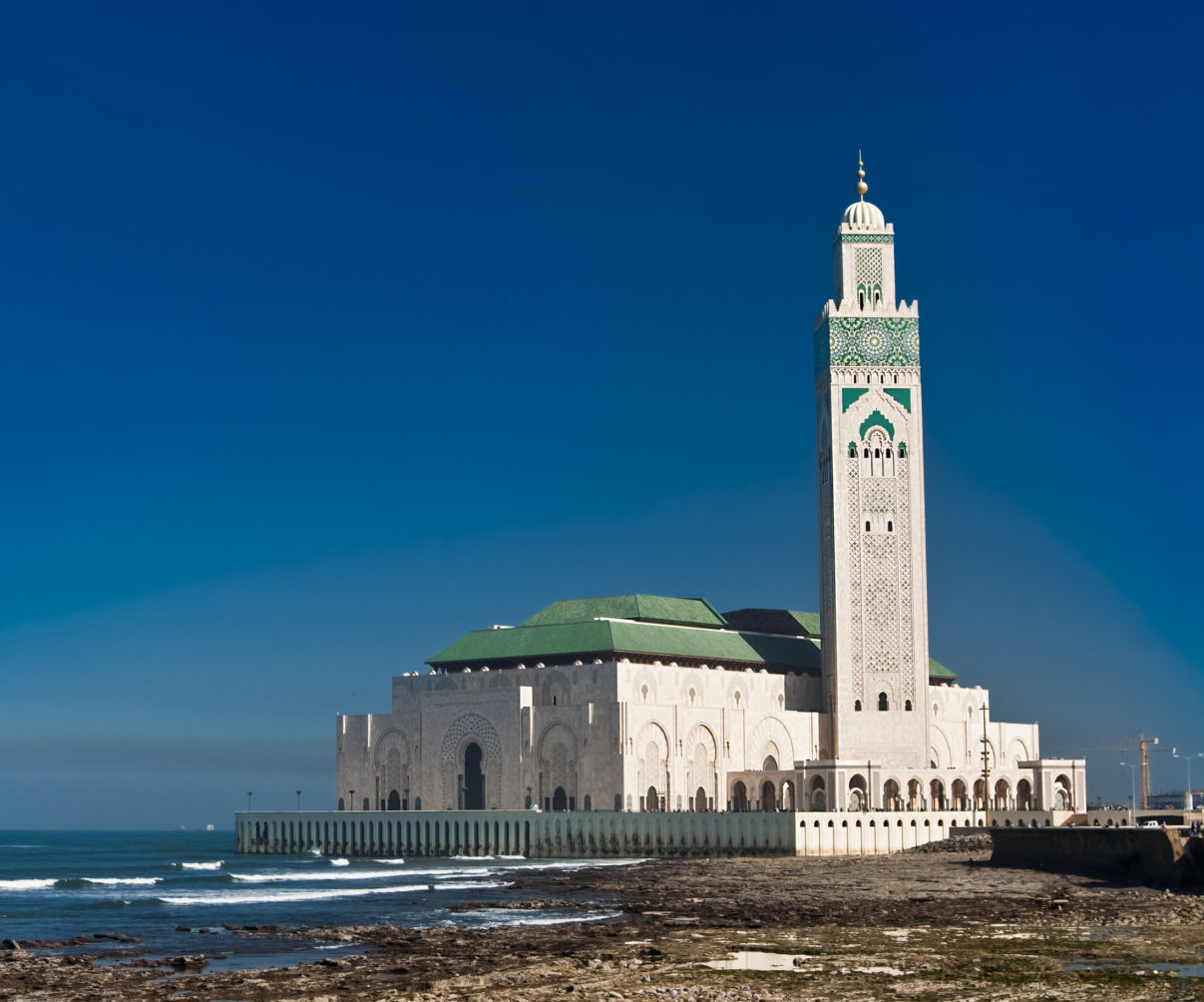
Casablanca
A name made famous by a Hollywood movie that was actually filmed entirely in California, Casablanca is a city with relatively modest roots in ancient times that is charging pell-mell into the future. Once called Anfa by the Berbers, Casa Branca under the Portuguese, and Dar al Baïda by the sultan who inherited it, Casablanca truly started to take shape under European influence in the mid 19th century as a port to access wool and wheat. When the French gained control of the city in the early 20th century, they built an attractive ville nouvelle outside of the historic medina, combining French and Moroccan architectural design in a style called Mauresque. Though Casablanca’s historic buildings do not rival some of Morocco’s better known cities, there is plenty to explore—the soaring Hassan II Mosque is situated on a vast plaza along the sea and is one of the largest mosques in the world. Enjoy the progressive attitudes of the locals who seem to focus more on the future than the past. And though the chaotic development of the city reflects this perspective as well, there are plenty of fine restaurants and hotels to make a short stay here a pleasant glimpse of modern Morocco.
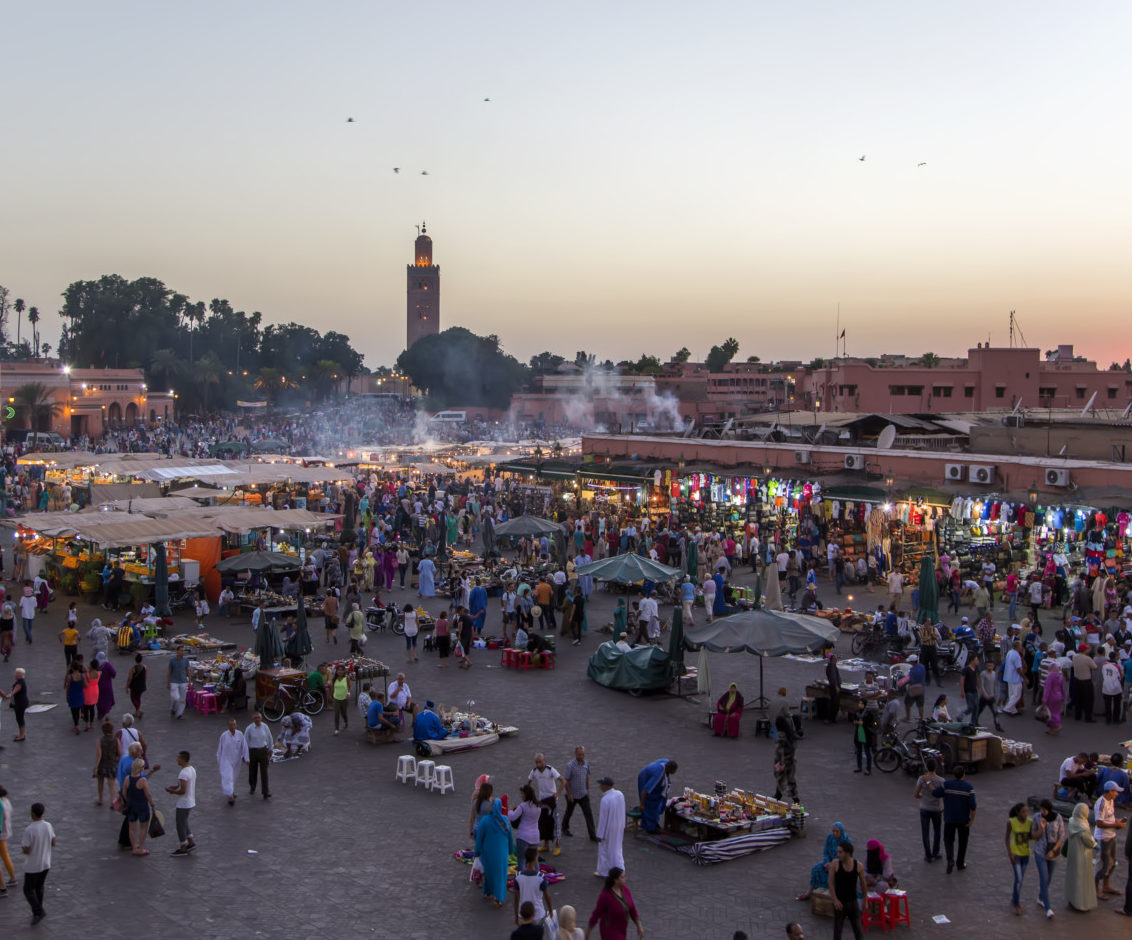
Marrakech
Situated in the foothills of the Atlas mountains, Marrakech conjures up bygone empires and eras with towering minarets dotting the skyline, miles of reddish-pink pisé walls enclosing the old quarter, and a labyrinth of lanes bursting with vendors and performers. Tucked behind ancient ramparts, the medina is the crowning jewel of the city—packed with crowded souqs alive with bright colors, aromatic food stalls, tea houses, and artisan crafts. At the heart of this chaotic jumble is the Djemaa el Fna square where dancers, street actors, and snake charmers perform into the night as restaurants come to life and musicians take over. Visit the elegant Bahia Palace to see intricately painted wood paneling, mosaics, stained glass, and woven silk tapestries that stretch floor to ceiling. Marrakech is home to many mosques and Koranic schools, and the soaring minaret of the 12th-century Koutoubia Mosque is a testament to the significance of the religious heritage of the city. An ancient maze of modern markets echoing with a cluttered symphony of exotic sights and sounds, Marrakech is a marvel to explore.
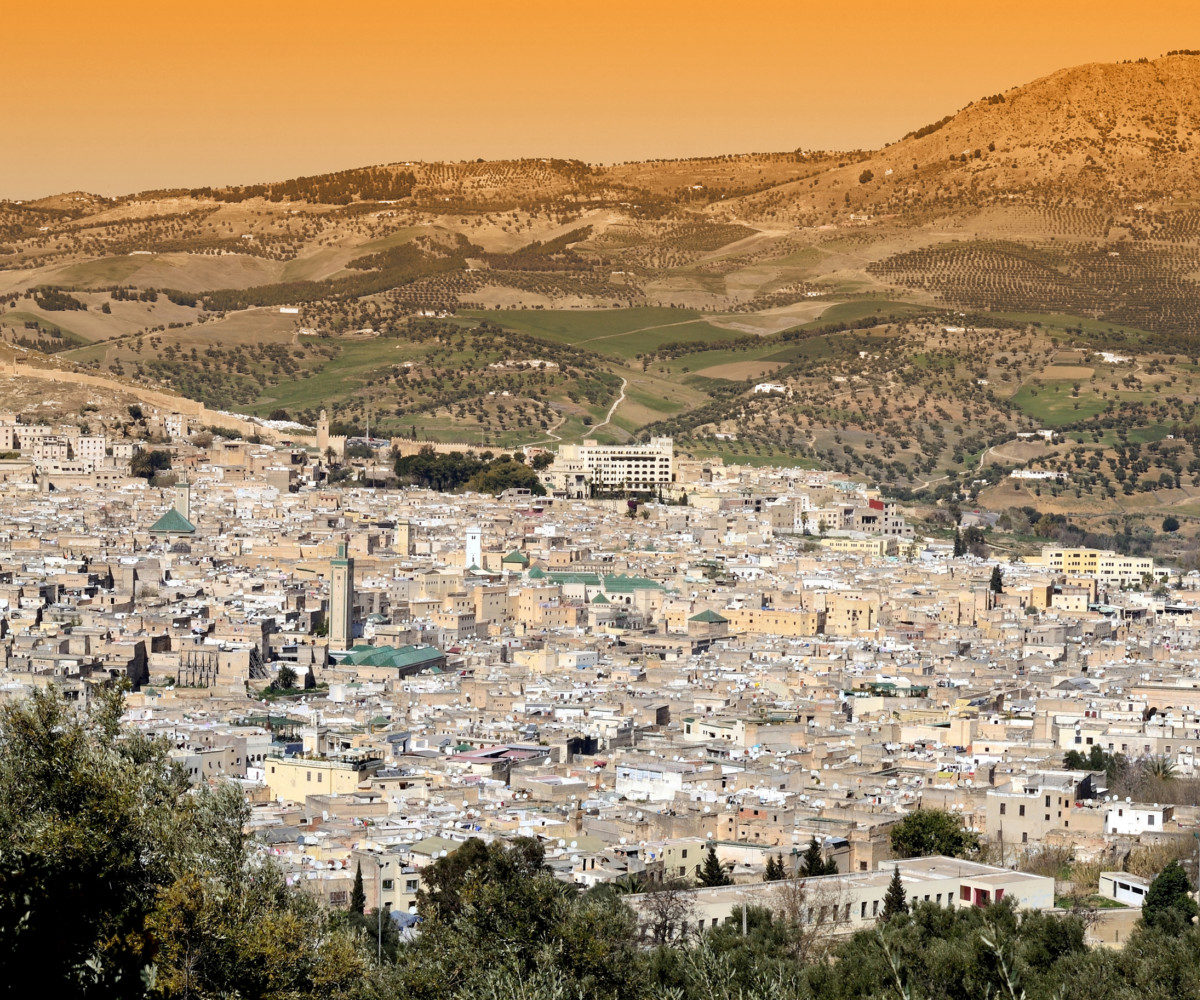
Fes
Sophisticated, chaotic, colorful, and the ancient spiritual center of Morocco, Fes is a abuzz with activity and is veritable fount of cultural monuments. The city’s Fes el-Bali quarter is a UNESCO World Heritage site and is the largest urban pedestrian zone in the world, with more than nine thousand narrow winding lanes—hundreds of mosques and ancient foundouk guest houses are interspersed throughout. Walking the warren of lanes and fountain-filled squares of the medina will transport you back centuries as donkey carts press by with local deliveries—the streets are a sensory cascade of aromatic foods, spices, artisan workshops’ curing leather, and the clamor of locals bartering in the crowded markets. The city is also home to the immense al-Kairaouine Mosque founded in 859 CE, which is one of the world’s oldest continuously operating colleges and libraries. For a slightly slower pace and more orderly streets, stroll through the Fes el-Jdid district and visit the old Jewish Quarter and the urban oasis of the Jnane Sbil Gardens—navigating this incredible city is a heady rush of picturesque pandemonium that you cannot miss on a trip to Morocco.
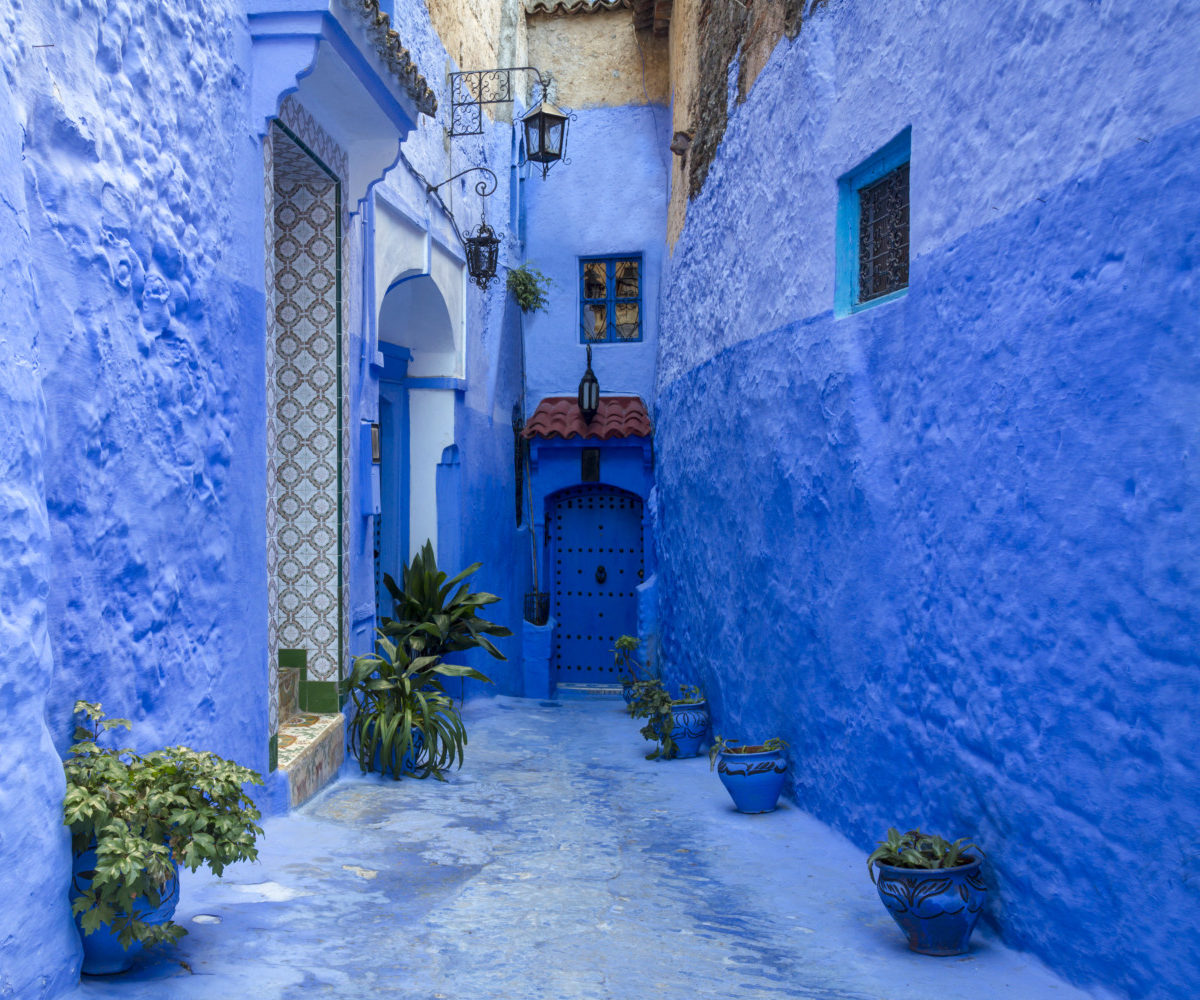
Chefchaouen
Perched on the slopes of the Rif mountains, Chefchaouen is a town with strong religious traditions yet a relaxed and bohemian atmosphere. Known for narrow, winding lanes and its ethereal aura of blue-painted buildings, Chefchaouen is a delightful mix of authentic and accessible. Founded in 1471 as a fortress to conduct military campaigns against the Portuguese, the town grew into an isolated religious haven for Muslims and Jews until opening their doors to outsiders and Christians in the early 20th century. Wander through the compact medina among artisan workshops to the bustling Plaza Uta el-Hammam, sip tea and soak up the alpine vistas, or head to the nearby Talassemtane National Park to trek through stunning mountain landscapes.
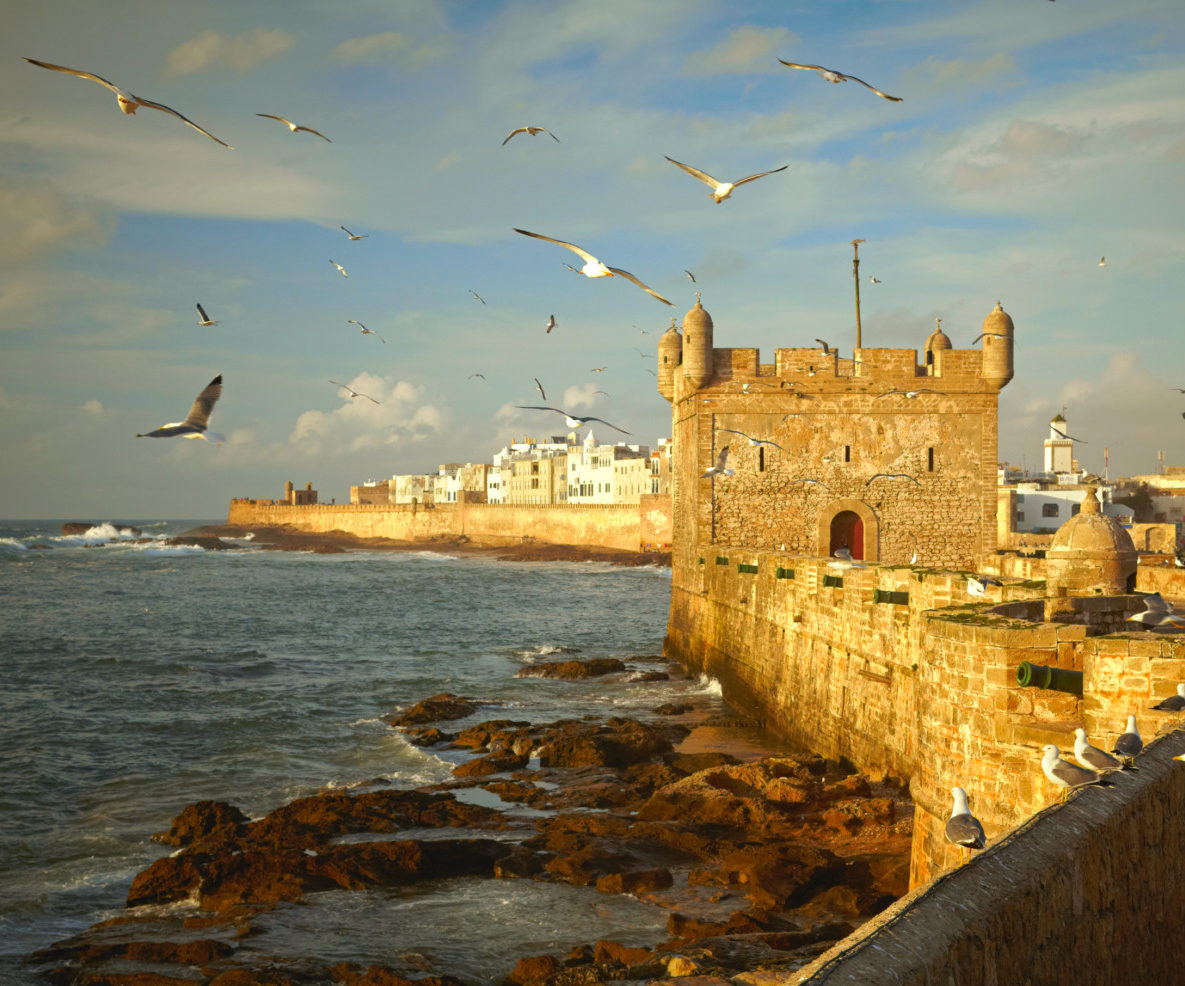
Essaouira
A captivating blend of working port, surf town, and seaside resort on the southern Atlantic coast, Essaouira has balanced its growing allure for tourists and its relaxed atmosphere with remarkable aplomb. People have built outposts and used Essaouira as a port since the Phoenicians in the 7th century BCE, but the modern city truly took shape under Saâdian ruler Sidi Mohammed ben Abdallah’s progressive vision; part of the city is still enclosed within the in the 18th-century oceanfront ramparts built during his reign. Within the walls of the medina, artisans carry on traditional cabinet making and wood carving, lending to the city’s reputation as an art haven of markets and galleries. Along the city’s crescent beach, surfers and kiteboarders ride the waves brought in by the Alizée—a fierce wind that helps keep Essaouira from becoming an overrun beach resort. Essaouira is a perfect destination to relax and enjoy an enchanting mix of chic-boutique hotels alongside the vibrant traditional fishing economy.
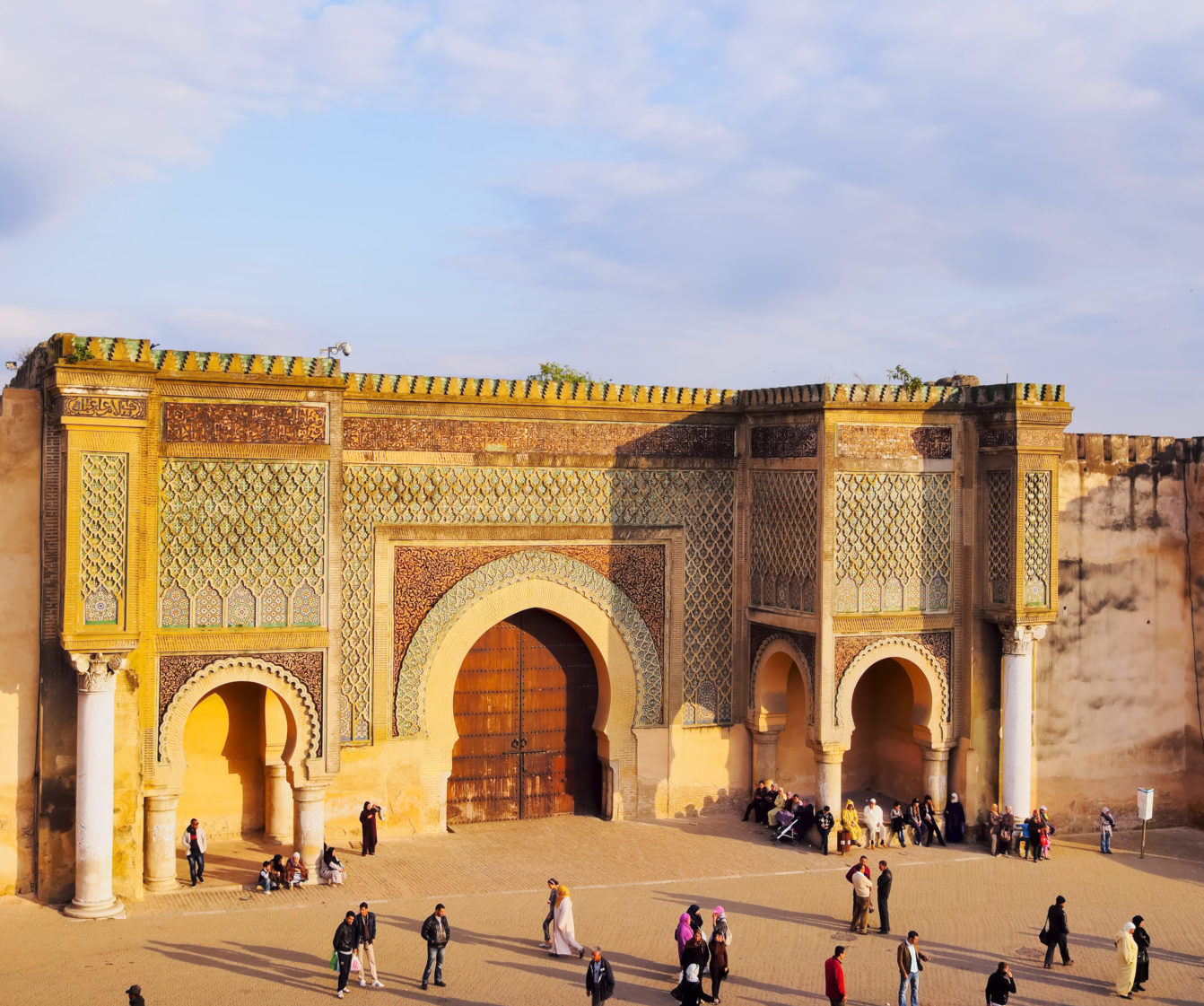
Meknès
Quieter, calmer, and often overlooked when compared to Fes or Marrakech, Meknès boasts equally magnificent architecture and an enjoyable laid-back atmosphere. Once the imperial stronghold of Moulay Ismail, a 17th-century sultan of the Alaouite dynasty, the city has the remains of three sets of imposing fortifications, the immense Bab el-Mansour gateway, and magnificent royal granaries. The narrow streets of the medina twist in a maze that has all the exotic charm of the Fes al-Bali while remaining largely residential and less chaotic. The legacy of the Alaouite sultans in Meknès is immortalized in ornate gateways, miles of stone walls, and an immense palace complex. Originally chosen by the sultan for its plateau perch, fertile soil, and abundant water, the region remains an agricultural center with numerous vineyards spilling across its rolling hills.
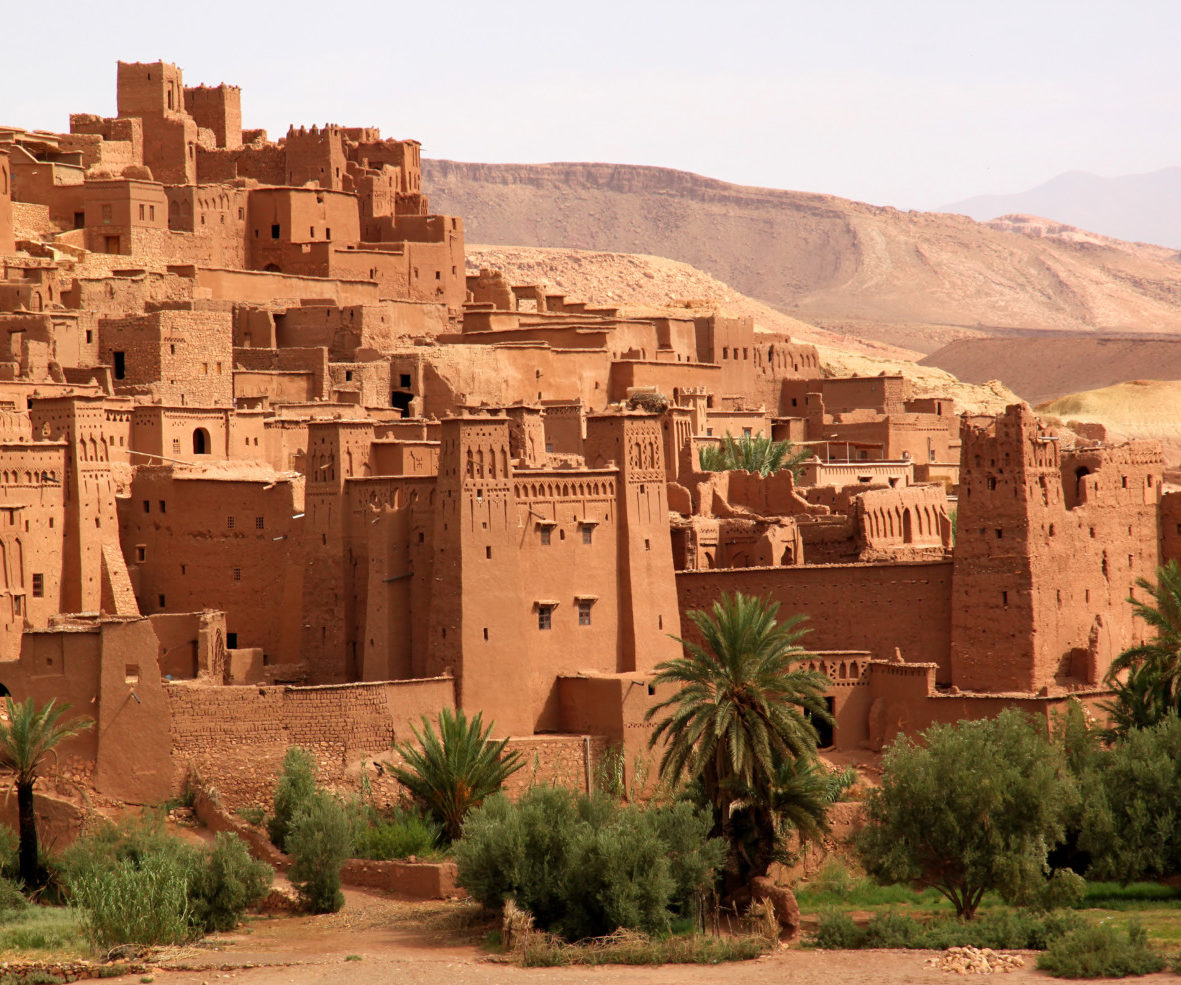
Ouarzazate
Perched on an arid plateau in the High Atlas mountains in southwestern Morocco, Ouarzazate is a renowned cinematic setting that has hosted a number of big-budget Hollywood productions. The consistent red hues of the local architecture make Ouarzazate feel like its own exotic world. And contrary to the noisy, hectic streets of other major Moroccan cities, there is a laid-back feel here that makes it the perfect base to explore the Sahara desert, the red-rock Todra Gorge, and the palm groves of the Draa Valley. Replete with quality hotels and restaurants, and a handful of local sights including the labyrinthine Taourirt Kasbah and the Aït Benhaddou red-earth fortress complex—a UNESCO World Heritage listed site west of the city—Ouarzazate is a gateway to a landscape of surreal beauty.
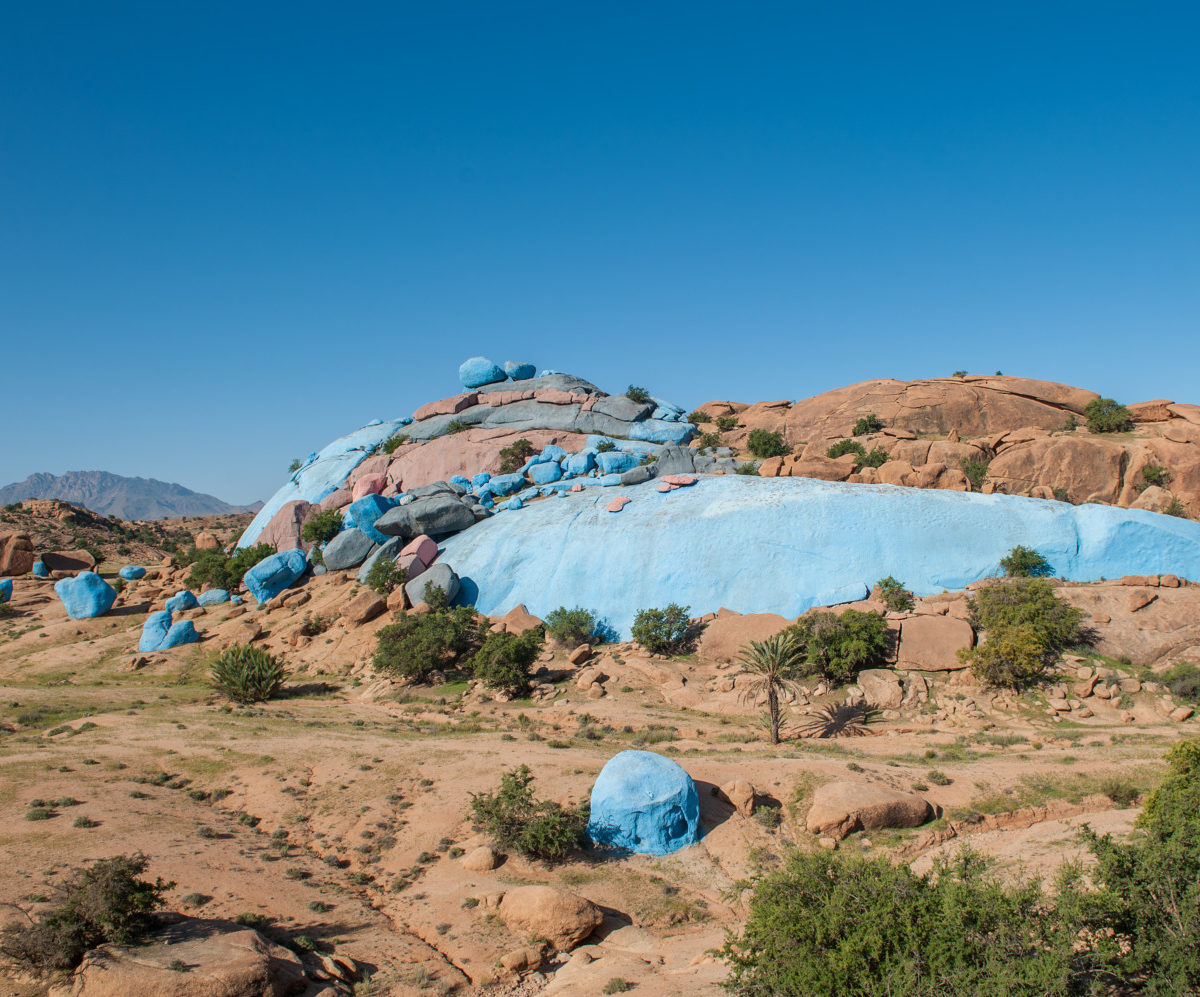
Tafraoute
A tranquil village embedded in the red-granite Ameln valley in the Anti-Atlas mountains south of Marrakech, Tafraoute is set in a stark and beautiful environment. With fewer than 5,000 residents, the town has a soothing atmosphere that makes it an ideal place to unwind and explore a region without the constant bustle of other tourist destinations. Nearby, the Ait Mansour Gorge, an idyllic oases in the heart of the mountains, is perfect for hiking and enjoying a refreshingly cool, verdant microclimate splashed against a desertous red backdrop. Though Tafraoute is known for the blue-painted rocks of Belgian artist Jean Verame, their vivid hues pale in comparison to the rainbow of ochre, pink, and burnt reds of the giant boulders scattered across the landscape.
